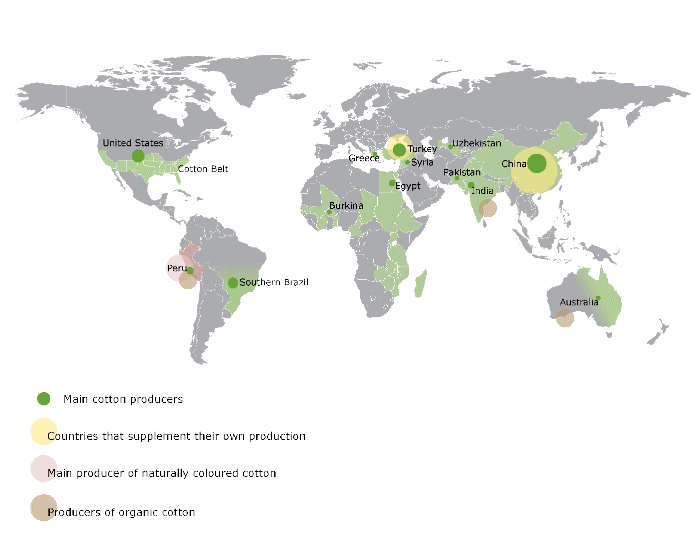 |
 |
 |
||
COTTON
Cotton is one of the most important commodities in the world, and also the most controversial from a sustainability perspective. Conventional cotton farming methods are well documented regarding water wastage, pollution and ethics.
The total area of land dedicated to growing cotton has not expanded to a significant degree in the past hundred years, but in that time the output has increased three fold. The recent spike in cotton fibre prices has led to research into alternative natural fibres.
The production of cotton extends to more than 100 countries, and is believed to employ over 35 million people throughout its supply chain, satisfying a world fibre demand of over 25 million tons per year.
The largest producer and consumer of raw cotton is China. It consumes around 40% of the world’s raw cotton. Although China is the largest producer of raw cotton, it still needs to supplement its domestic production to feed the insatiable appetite of its garment industry.
India, Pakistan and Turkey also supplement their domestic production.
The Southern United states is the second largest producer of raw cotton.
Australia, China, Brazil, and Pakistan are the lowest cost producers.






